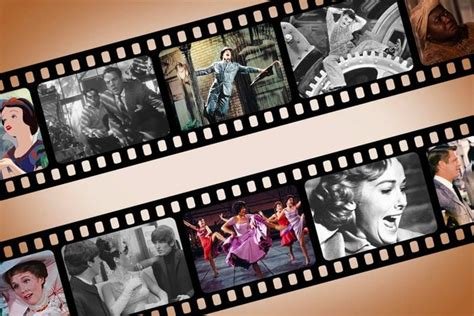In today’s television landscape, uplifting TV series play a vital role in emphasizing strong family values. This blog post explores the significance of family dynamics in modern programming and identifies top uplifting TV series that celebrate these themes. It discusses common themes found in family-oriented shows and how they enhance viewer engagement, fostering deeper connections. Notable examples highlight the impact of strong family values in various series. The article also outlines five compelling reasons to binge-watch these uplifting family shows, including the creation of shared viewing experiences that strengthen family bonds. Finally, it reflects on the enduring impact of family values in television and speculates on their future, emphasizing the importance of uplifting TV in nurturing meaningful connections among viewers.
Why Family Values Matter In Today’s TV Programming
In an era where television shapes cultural narratives, the importance of family values in programming cannot be overstated. Family values serve as the foundation for countless uplifting TV series, providing viewers with relatable stories that resonate across generations. Audiences today are seeking content that not only entertains but also emphasizes the significance of family connections, love, and support. This growing demand for uplifting TV series that emphasize these values helps foster a sense of community and understanding among viewers.
Television shows often reflect the complexities of familial relationships, showcasing both the joys and challenges families face. When audiences engage with characters who prioritize family, they find solace in shared experiences and emotional moments that are often depicted. This portrayal helps audiences to form deeper emotional connections with the storylines and characters, making them more invested in the shows they watch. It’s clear that the depiction of strong family values has transformed the way viewers relate to and engage with TV programming.
Key Reasons for Embracing Family Values
- Promotes love and support within family units.
- Encourages strong relationships across generations.
- Fosters empathy and understanding in diverse family dynamics.
- Highlights problem-solving through communication.
- Inspires viewers to cherish family time.
- Offers relatable content that reflects everyday life.
- Creates a sense of belonging through shared values.
As the television landscape continues to evolve, shows that incorporate family values play a crucial role in shaping societal perspectives. By showcasing relatable story arcs centered around family, these series contribute to the ongoing dialogue about the importance of family in our lives. Moreover, they also provide a safe space for viewers to explore and reflect on their own family experiences, ultimately reinforcing the idea that family bonds are essential for happiness and fulfillment in today’s fast-paced world.
Top Uplifting TV Series That Celebrate Family Dynamics
When we think about uplifting TV series, the emphasis on family dynamics often stands out. These shows provide not only entertainment but also valuable lessons about love, perseverance, and the importance of family bonds. Families depicted in these series range from conventional to unconventional, showcasing how diverse dynamics can bring people together. It’s fascinating how these shows echo real-life situations, creating relatability that resonates with viewers of all ages.
One of the appealing aspects of these series is their ability to uplift spirits while addressing real-life challenges. Audiences find themselves connecting with characters as they navigate various emotional themes like forgiveness, growth, and acceptance. The sentiment of togetherness woven through the narratives encourages viewers to reflect on their own family ties as they share laughs, tears, and happy moments with their loved ones while viewing.
Must-Watch Series Include
- Parenthood
- This Is Us
- Modern Family
- The Good Place
- Gilmore Girls
- Brooklyn Nine-Nine
- The Simpsons
The richness of the themes presented in these uplifting TV shows often helps to reinforce the importance of communication within families. Each episode serves as a gentle reminder that love often prevails despite differences. Such themes encourage viewers to appreciate family moments, whether through laughter or heartfelt discussions, driving deeper engagement and connection with the series’ message. It’s this intricate tapestry of family life that captivates audiences, making them yearn for more uplifting stories.
Main Themes Commonly Found In Uplifting Family Shows
Uplifting TV series often resonate with audiences due to their heartfelt depiction of family values. These shows are designed to foster positive feelings, entertain, and instill life lessons that viewers can carry into their own lives. The core themes featured in these uplifting narratives not only highlight the importance of family but also advocate for a sense of community and togetherness. By presenting relatable scenarios, these series create a platform for meaningful family discussions and connections.
One of the most compelling aspects of these shows is the recurring themes they explore. These themes unite characters in their struggles, joys, and explorations of love, ultimately creating a universal message that appeals to viewers of all ages. For those looking to dive deeper into understanding what makes these shows so effective, it’s essential to recognize the elements that frequently emerge in uplifting family television.
- Recurring Themes In Family-Centric TV
- Unconditional love and support
- Resilience in the face of adversity
- Importance of communication and honesty
- Celebration of traditions and shared experiences
- Embracing diversity and acceptance
- Collaboration and teamwork within families
- Life lessons learned through challenges
Through these themes, uplifting TV shows create powerful narratives that encourage viewers to reflect on their own family dynamics and relationships. Such themes often provide a sense of hope and motivation, which is particularly valuable in today’s fast-paced world. As families gather around these series, they engage in conversations that not only entertain but also nurture understanding and empathy, fortifying familial bonds and shared values.
How Family Values Enhance Viewer Engagement
The role of family values in television programming cannot be overstated, particularly in uplifting TV shows. When these values are at the core of a series, they foster a sense of connection among viewers, enabling them to relate to the characters on a deeper level. The emotional resonance created by strong family values allows audiences to feel invested in the narratives, enjoying not just the entertainment but also the meaningful lessons portrayed.
Uplifting TV series that focus on family values also serve as a mirror to everyday life, reflecting challenges and triumphs that many families experience. This representation can amplify viewer engagement, as audiences see their own experiences echoed on screen. Furthermore, such shows often encourage discussions among viewers, enabling them to delve deeper into the themes presented, which can solidify their engagement over time.
Family values remind us of our roots and inspire us to keep strong connections, both on-screen and in our lives.
To better understand the aspects that contribute to viewer engagement in uplifting TV shows, consider the following Key Engagement Factors:
- Relatable Characters: Viewers connect when they see aspects of their own family dynamics reflected.
- Positive Life Lessons: Uplifting stories often reveal encouraging messages that resonate with audiences.
- Emotional Storytelling: Engaging narratives that elicit laughter and tears enhance viewer investment.
- Shared Experiences: Shows that reflect communal family moments foster collective viewing.
- Inspiring Conflict Resolution: Viewers appreciate narratives that depict healthy conflict resolution strategies.
Ultimately, the inclusion of family values results in a unique viewing experience that transcends mere entertainment. In the age of fast-paced digital content, uplifting TV series that highlight these values not only capture attention but also create lasting impact. As viewers find themselves engaging more profoundly with shows rooted in family, they cultivate a connection that enriches their viewing habits and fosters a communal spirit among families watching together.
Notable Examples of Strong Family Values In TV Shows
When it comes to television programming, uplifting TV shows often highlight the essence of family values. These series allow audiences to experience familial bonds, showcasing the beauty of connection, understanding, and support. Family-oriented narratives resonate deeply with viewers, as they often reflect real-life experiences. Shows that exemplify strong family values not only entertain but also offer valuable lessons about compassion, resilience, and the importance of relationships.
Many of these series incorporate diverse family structures and challenges, allowing various audiences to identify with the characters. By viewing relatable situations, fans can find solace, motivation, and inspiration in their own lives. The beauty of TV shows celebrating family values lies in their ability to uplift audiences while teaching powerful lessons about love, forgiveness, and perseverance.
Examples To Explore
- Modern Family
- This Is Us
- Parenthood
- The Fresh Prince of Bel-Air
- Gilmore Girls
- Full House
- 7th Heaven
As audiences flock to witness these engaging stories unfold, it becomes crucial to discuss the broader implications of family representation in media. These series significantly influence societal perceptions of family dynamics, highlighting the need for inclusivity and understanding. By portraying different family structures, from traditional to modern, these shows embrace a multitude of experiences, fostering acceptance and empathy among viewers.
The Importance Of Representation
Strong representation in television allows audiences to see themselves and their unique family situations reflected back to them. This resonates with a sense of belonging, making it easier for viewers to connect emotionally with characters’ journeys. Moreover, the portrayal of various cultural backgrounds enriches the narrative landscape, broadening the understanding of what constitutes a family. In an era where diversity matters more than ever, uplifting TV shows that focus on family values can play a pivotal role in shaping societal views.
Cultural Influences On Family Programming
Cultural influences have a significant impact on how family values are portrayed in television series. Different cultures offer diverse perspectives on family dynamics, which can enrich storytelling. By weaving in cultural elements, these shows not only entertain but also educate audiences about various traditions and familial roles that shape identities. This intersection of culture and family adds depth to the narrative, allowing viewers to appreciate the complexities and beauty of different family structures.
Five Reasons To Binge-Watch Family-Oriented Series
Choosing to binge-watch family-oriented series can be a delightful way to foster connections and share meaningful experiences with loved ones. These shows often embody the essence of what it means to be part of a family, presenting relatable situations that can resonate with viewers of all ages. By diving into this genre, not only do you find entertainment, but you also gain insights into strong family values that can enhance everyday life.
One significant reason to invest time in these uplifting series is their capacity to promote togetherness. When families watch these types of shows, they create opportunities for discussion and reflection on the themes presented. Each episode can spark conversations about values such as responsibility, love, and respect, helping to strengthen familial bonds. Furthermore, the light-hearted humor and engaging storylines often showcased encourage laughter, reinforcing positive interactions.
Family-oriented series serve as a reminder of the importance of being present with one another while enjoying quality time together.
Another compelling reason is the portrayal of diverse family dynamics. Uplifting TV frequently showcases different types of families; whether they’re traditional, blended, or single-parent structures, each story offers something unique. This representation not only validates various family experiences but also fosters understanding and empathy toward others’ situations.
Benefits of Watching Together
- Strengthens family bonds through shared experiences.
- Encourages open conversations about important topics.
- Promotes empathy and understanding of diverse family structures.
- Provides laughs that can lighten the mood.
- Creates a sense of belonging and togetherness.
- Enhances learning about values and ethics in a fun way.
- Keeps family members connected in today’s fast-paced world.
In summary, family-oriented series serve as an essential tool for building connections and imparting strong life lessons. With relatable characters and inspiring narratives, these shows embody the essence of what it means to be a family. Whether you’re choosing a light-hearted sitcom or a more emotional drama, the experiences and values from these uplifting TV series can lead to a deeper appreciation for family, making them a worthwhile choice for your next binge-watching session.
Creating Family Connection Through Shared Viewing Experiences
Engaging with your family through the lens of the television screen can create lasting memories and foster strong bonds. Watching shows together not only allows for shared entertainment but also opens up avenues for conversations about values and life lessons. This is particularly true for uplifting TV series that emphasize family values and unity, providing themes that are both relatable and inspiring.
The act of watching television as a family creates a unique platform to discuss important concepts and perspectives. By selecting shows that embody strong family ties, you can instill values of compassion, love, and support within your children, all while enjoying heartfelt stories. Uplifting TV series encourage viewers to actively participate in each other’s lives, making it easier to communicate and explore feelings as a family unit.
Ways To Engage Your Family
- Choose a designated family night for regular viewing.
- Encourage open discussions about the episodes after watching.
- Choose shows that align with your family’s values and interests.
- Engage in fun activities related to the show’s themes.
- Share personal insights on characters’ decisions and outcomes.
- Involve younger family members in selecting shows to watch.
- Organize group-friendly snacks for your viewing experience.
Involving the entire family in the decision-making process for viewing choices reinforces the importance of each member’s opinion. This collaborative approach not only nurtures mutual respect but also ensures that everyone looks forward to watching the selected shows together. Ultimately, the experience transforms into a cherished tradition, deepening family bonds through the shared journey offered by uplifting TV series.
Final Thoughts On The Impact Of Family Values In Television
As we reflect on the role of television in shaping societal norms and values, it’s clear that uplifting TV series play a pivotal role in reinforcing family connections. These series not only entertain but also inspire viewers to appreciate the importance of family bonds, mutual respect, and unconditional love. They often present scenarios that mirror our lives, making it easier for viewers to connect with the characters and their experiences.
Moreover, the depiction of strong family values helps cultivate empathy and understanding among audiences. Shows that highlight the struggles and triumphs of families can create a sense of belonging for viewers who might be experiencing similar challenges. This shared experience can foster discussions around family dynamics, ultimately leading to a deeper understanding of the importance of communication and support within families.
Actionable Takeaways:
- Identify TV series that resonate with your family dynamics.
- Schedule family viewing nights to enhance communication.
- Discuss the morals and lessons from each episode.
- Encourage family members to share their thoughts on the characters’ decisions.
- Incorporate lessons learned from shows into real-life situations.
- Explore different cultures through family-centric narratives.
- Support shows that prioritize family values in their storytelling.
By promoting uplifting narratives, television serves as an essential medium for reinforcing family values. These stories not only entertain but also prompt viewers to reflect on their own relationships. As media continues to evolve, the importance of presenting well-rounded, positive portrayals of family life will become increasingly crucial in fostering strong community ties and individual well-being.
In a world where challenges persist, uplifting TV with strong family values provides a comforting reminder of what truly matters.
Ultimately, television has the power to shape perceptions and inspire change within families. As audiences gravitate toward shows that celebrate love, respect, and unity, we can anticipate a future where these values influence not only our viewing habits but also the fabric of society itself. The ongoing commitment to highlight family dynamics in an uplifting manner promises to leave a profound impact on future generations.
The Future of Family Values In Television Programming
The landscape of television is undergoing a transformative shift, with family values increasingly taking center stage. As viewers seek more meaningful connections through content, television series that embody these principles stand out. These uplifting TV series not only entertain but also encourage positive family dynamics and emotional bonding among audiences. The portrayal of relatable family scenarios fosters a sense of belonging and reassures viewers that they are not alone in their experiences.
With a focus on strong family values, the future of television programming will likely see a surge in shows that resonate deeply with audiences on an emotional level. Audiences are becoming more discerning and are gravitating towards series that reflect their real-life struggles and triumphs. This means that producers must prioritize stories that offer hope, inspiration, and the joy of family camaraderie. The blend of humor, drama, and heartfelt moments will continue to be the formula for success in creating engaging family-oriented programming.
Trends To Watch
- Increased representation of diverse family structures
- Integration of real-life issues affecting families
- Positive role modeling and character development
- Collaborative storytelling that involves audience feedback
- Emphasis on mental health and emotional wellbeing
- Expansion of international family dynamics
As we look to the future, it is evident that the evolution of family-oriented content will shape how families interact with television programming. Viewers will seek shows that not only entertain but also reflect their realities and aspirations. Family values will continue to play a significant role in fostering community and connection, encouraging more families to gather around their screens for shared viewing experiences. Ultimately, this focus on uplifting narratives can lead to a brighter, more connected future in television, where the significance of family is cherished and portrayed authentically.









